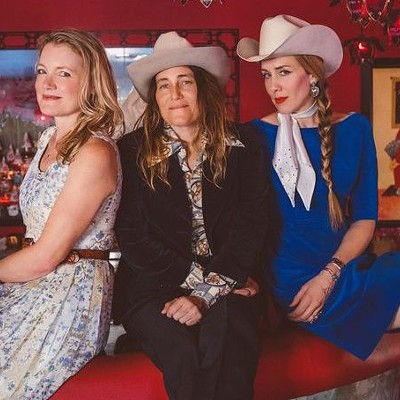The other day I got an unexpected visit from a friend, Robin Beltran, a media personality who is African-American. She recently went natural on the dome. Her hair is now a big, beautiful, puffy unapologetic Afro – a crown, she calls it. She said something very revealing to me during our visit.
“I realized I had never seen my hair before,” she said with tears in her eyes, as she described going natural for the first time in her adulthood.
For most of her life – all of her life – Beltran went against the grain of her natural state of beauty – perhaps drenching her head with chemicals to force a look she wasn’t naturally designed to be in, she told me.
Now she sports the same look as Colin Kaepernick and all that the similarity implies.
So what does that story have to do with Bombo Estereo’s “Soy Yo” music video, which has taken the nation by storm on social media and in major media outlets, and inspired Latinas across the country to revisit their own upbringings and hoist their childhood flutes in the air with pride? What does Beltran's story have to do with a Spanish pop song that’s now an anthem of Latina empowerment and its beloved mascot – the “brown Little Miss Sunshine” – which collectively represent accepting oneself and pride in oneself no matter the public narrative of what beauty is supposed to look like, no matter how opposite it might be of you?
Everything.
All of this is tied together. Beltran's story, how beauty is defined in America and its contrast to reality, as well as the portrayals of any ethnic minority – or woman for that matter – in media, are pages of the same book.
It’s a book about little girls trying to find their place in this country, or society, while magazines and TV shows feature over-animated, cartoon-like versions of themselves and tell them that their shape, their color – maybe even their hair – don’t fit the bill.
But there’s a new chapter emerging in this book and it is titled, “Soy Yo.” Translation: “I am Me.”
The author is a young girl by the name of Sarai Isaura Gonzalez. The 11-year-old is the central figure of the video, whose dark brown skin, suspenders, crocks, clunky glasses, and thousand-yard stare have captured the hearts of women across the country, similar to what Abigail Breslin did to movie audiences in Little Miss Sunshine in 2011.
“For non-Latinos, they should know that we are celebrating that little girl's decision to let go of cultural and societal inhibitions applied to her,” said Noemi Lujan, a corporate social responsibility and public relations professional, who grew up in Los Angeles. “In this case, the inhibitions are associated with her geeky and chunky exterior. She doesn't look like a video vixen, and probably never will. But she's going to slay in everything she does and everywhere she goes.”
Noemi described the powerful multicultural narrative that’s emerged from the “Soy Yo” video. There’s another narrative that gets articulated when I talked to Reina Montes, a corporate communications professional in Albuquerque.
“I don’t think the message this video conveys is specific to Latinos at all,” she said. “It’s about confidence, individuality, feeling comfortable in your own skin and not caring about what others think, all of which are easier said than done. The little girl in this video is inspiring because she experiences this jolt of confidence with her new hairstyle and she uses it to conquer the day and stand up to all the people – the mean girls, the older boys, who probably give her a hard time.”
Lujan and Montes’ perspectives are diverse, hard-hitting, different from one another, and all valid.
Above the interpretations of what the video means, women see younger versions of themselves in Gonzalez.
“She is the closest thing of what I looked like as a young girl,” said Maritza Solano, who was raised in Los Angeles and Hyattsville, Maryland, and identifies herself as a Latina of Guatemalan and Mexican heritage. “I think that’s what resonated. She was a little rounder and browner than the images of young girls I was exposed to as a child.”
An education manager for an immigrant rights advocacy nonprofit, Solano knows a little about what goes on in the minds of Latinos assimilating into this country.
“I remember reading Dr. Beverly Tatum’s work on the different phases of racial identity development, and how at the immersion/emersion phase, we begin to embrace symbols that connect us to our racial identity,” she said. “In some ways, this video does that as well, as a young girl walking through the world, she is recognizing who she is and fully embracing all of her. Honestly, that’s radical. To love, recognize and honor all of who you are, that is something adults struggle with.”
So why are ethnic minority groups so obsessed with accurate portrayal and representation, when the women interviewed for this piece all grew up to be intellectual, successful, and beautiful human beings and professionals, despite not seeing their true selves in media?
There are a lot of answers to that question. Here’s mine:
Because you can’t succeed yourself out of racism. Ask President Barack Obama. You can’t earn your way out of discrimination. Ask any black or brown person in Houston in 2011 trying to get into the city's hottest bars.
Despite my colorful career and success as a business owner, my Uber driver last week still felt compelled to tell me he thought I was a "just another cholo” when I approached his car. Through the ride, he implied that my look didn’t match my intelligence, despite being dressed very normally. Not all of us look like Ricky Martin.
I was still denied entrance into a bar because the sleeves on my short-sleeve button-up were “too long,” while two white gentlemen were let in with backward hats and flip-flops.
I absolutely believe perceptions of Hispanic men in America are directly fueled by false or stereotypical narratives in many forms of media, which manifest into disrespectful dialogue in cabs and unfair treatment at bar entrances.
Racism is rooted in how people perceive you based on the exterior – what they think you are capable of, what they think you aren’t capable of, and what they think you are worth.
I know this to be true because once my Uber driver knew me; he was at ease with me. So ensuring America sees little brown Hispanic girls win throughout the media spectrum to influence the masses to think more logically about the people they cross paths with daily is absolutely paramount to the progress we are seeking as a community.
Martiza and Maricela Huerta are twin sisters who grew up in Orange County. They own a New York-based public relations agency. Like the little girl in the video, they played basketball throughout all of their school years and in adult leagues. You look at pictures of them as young girls and you absolutely see why they say that the “Soy Yo,” video is their life’s documentary. The played pick-up games against boys on the court and dance battled their older siblings and their friends at house parties, just like in the video.
If you knew these two, you know they did everything right. They built their lives off of the American Dream blueprint, but that didn’t stop Martiza from being criticized and told not to introduce herself as Mexican-American or not to speak Spanish at the Republican National Convention – all basic rights of hers.
Just as Kaepernick was criticized and told not to exercise his right to protest.
All pages of the same book.
At the core of “Soy Yo’s” message is to be yourself, but we live in a volatile time when the voice for equal rights is as loud as I can remember in my lifetime. That has made certain people insecure about their standing in this country and they wonder whether they will matter as minorities turn into majority populations, challenging the traditional definition of what it means to be and look like an American.
In fact, doing what the song says – being yourself – whether that means donning an Afro or flying a Mexican flag inside of your own home, is easier said than done. It can be interpreted as an undeniable threat to people’s place in America.
My friend in Pittsburg took down her son’s Mexican flag from his room during a furniture delivery because she knows, despite her son being an American citizen, being prideful of his heritage can carry real consequences in this time. She knows being American isn’t American enough when you’re Hispanic in Pennsylvania.
So whether we know it or not, Americans with brown skin go on these PR campaigns to show all of America who we really are, hoping Uber drivers, bouncers, Airbnb hosts and employers can unlearn nonsense and embrace reality about American Latino citizens and the undocumented, alike.
The “Soy Yo” video and its promotion by U.S. Latinos throughout social media is an example of that, intended or not.
“I think video has a message for all,” said Solano. “For my Latinos and non-Latinos it may be that we don’t all look like Sofia Vergara or J.Lo, but that our bodies are just as deserving of praise, love, and honor as that which is given to these women. And also from a more political angle that we will keep fighting for a space in the world; that while there are folks who say we aren’t enough, whether questioning our inclusion in this country, our sexual preferences, our looks, that in fact we are enough regardless of what we look like.”
Support Us
Houston's independent source of
local news and culture
account
- Welcome,
Insider - Login
- My Account
- My Newsletters
- Contribute
- Contact Us
- Sign out
The Power of the "Soy Yo” Video and the “Brown Little Miss Sunshine”
Rolando Rodriguez September 27, 2016 6:00AM
[
{
"name": "Related Stories / Support Us Combo",
"component": "11591218",
"insertPoint": "4",
"requiredCountToDisplay": "4"
},{
"name": "Air - Billboard - Inline Content",
"component": "11591214",
"insertPoint": "2/3",
"requiredCountToDisplay": "7"
},{
"name": "R1 - Beta - Mobile Only",
"component": "12287027",
"insertPoint": "8",
"requiredCountToDisplay": "8"
},{
"name": "Air - MediumRectangle - Inline Content - Mobile Display Size 2",
"component": "11591215",
"insertPoint": "12",
"requiredCountToDisplay": "12"
},{
"name": "Air - MediumRectangle - Inline Content - Mobile Display Size 2",
"component": "11591215",
"insertPoint": "4th",
"startingPoint": "16",
"requiredCountToDisplay": "12"
}
,{
"name": "RevContent - In Article",
"component": "12527128",
"insertPoint": "3/5",
"requiredCountToDisplay": "5"
}
]
KEEP THE HOUSTON PRESS FREE...
Since we started the Houston Press, it has been defined as the free, independent voice of Houston, and we'd like to keep it that way. With local media under siege, it's more important than ever for us to rally support behind funding our local journalism. You can help by participating in our "I Support" program, allowing us to keep offering readers access to our incisive coverage of local news, food and culture with no paywalls.
Contributor Rolando Rodriguez is the co-founder of Trill Multicultural.
Contact:
Rolando Rodriguez
Follow:
Twitter:
@rolandorodjr
Instagram:
@rolandorodriguezjr
Trending Music
- Houston Concert Watch 4/24: Rolling Stones, Bad Bunny and More
- Top 10 Butt-Rock Bands of All Time
- An OG Beatles Fan Proves She Loved Them—Yeah, Yeah, Yeah!
-
Sponsored Content From: [%sponsoredBy%]
[%title%]

Don't Miss Out
SIGN UP for the latest
Music
news, free stuff and more!
Become a member to support the independent voice of Houston
and help keep the future of the Houston Press FREE
Use of this website constitutes acceptance of our
terms of use,
our cookies policy, and our
privacy policy
The Houston Press may earn a portion of sales from products & services purchased through links on our site from our
affiliate partners.
©2024
Houston Press, LP. All rights reserved.





